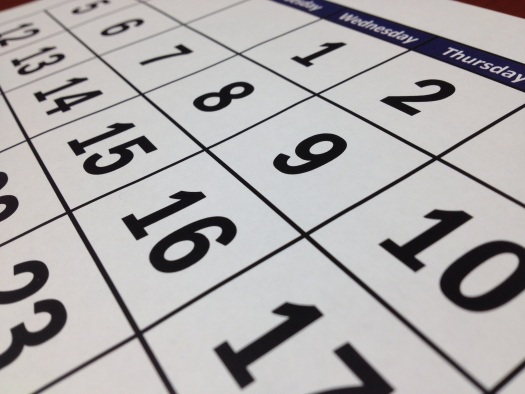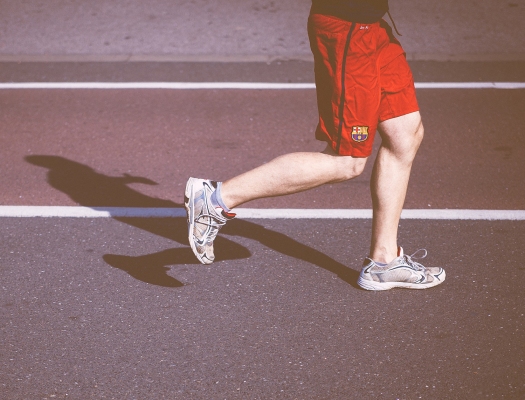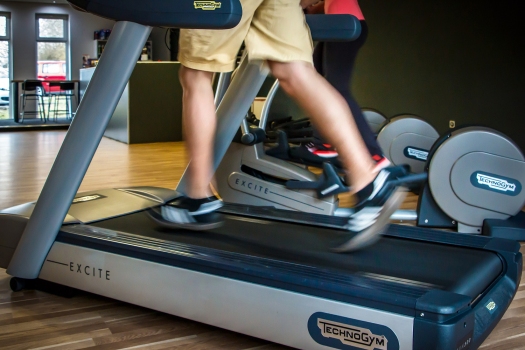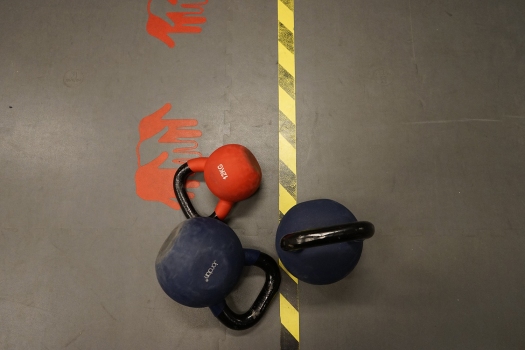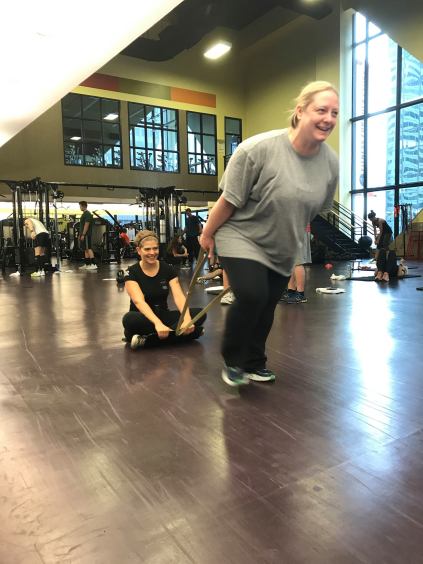Lately, I’ve been getting a lot of questions about exercise selection.
How many times should I repeat my workouts before switching exercises?
Do I need to change things frequently to confuse my muscles?
When I do make changes, how do I know what to do?
I have strong thoughts on this topic based on my years of experience training clients and observing my own growth in the weight room. Let me set the record straight for anyone who’s confused.
Why I don’t like to switch exercises all the time
Think about your first experience with a challenging exercise, like a deadlift. Did you walk into the gym and nail it right away? Of course not. It probably took you many weeks just to figure out how to perform the exercise correctly. As you refined your technique, you felt more confident and gradually added weight. Building a truly impressive deadlift takes years to accomplish.
Learning new exercises requires time, energy, and patience. You won’t be able to push yourself very hard when you’re learning. This is why my clients repeat the same workouts many times before I change their exercises. It’s a myth that your muscles need constant variation to “keep them guessing.” If you’re constantly switching things up, you’ll never actually put in the work necessary to improve.
You need to build proficiency in an exercise before you can truly reap its benefits. Most of the initial progress we make when learning something new at the gym comes from nervous system adaptation. First, our brains must figure out what body parts to move in what order. Only then can we start to recruit more of our muscle tissue to move heavier loads with better speed and control. You need to reach this second stage to see noticeable gains in strength, size, and performance.
Another way to think about this comes from the super smart guys at Strength Faction. They believe exercise proficiency helps you effectively express your training intentions. For example, let’s say you want to get stronger using squats. If you can’t squat well, you’ll never be able to handle heavy enough loads to build strength. The same goes for other goals such as increasing power. Jumping for power development does you little good if you don’t know how to land safely.
Repetition leads to mastery. The more we practice an exercise, the better we get. The better we get, the more energy we can devote to pushing our physical and mental limits. This is where the magic of progress happens.

When should I switch exercises?
For best results, you should follow a long-term, structured workout program. I typically write programs lasting three to four months. Each program focuses on a big-picture goal like fat loss, building muscle, returning from an injury, or training for a race.
Within this larger framework, my clients’ workouts change every four to six weeks. This is the sweet spot to get the most out of each exercise. However, some people can repeat the same workouts for eight weeks and still see progress. This is especially common with newer trainees who aren’t as experienced with strength training.
Before switching exercises, ask yourself these questions:
- Am I still making progress with this exercise? If so, I recommend leaving the exercise in your program until progress stalls. Remember progress comes in many forms: adding weight, performing more sets or reps, taking less rest, using better form, etc.
- How is my recovery? If you’re feeling great during and between workouts, you still have room to push yourself and grow with your current plan. If you’re feeling excessively sore and tired or you start dreading your workouts, it’s probably time to switch gears.
- Is my primary goal fat loss? If you want to lose weight, you don’t want to become too efficient in the gym. I still recommend prioritizing strength work, but you can introduce a bit more variety with your assistance and conditioning exercises in the latter parts of your workouts. If your primary goals are building strength or muscle, you’re better off spending more time with the same set of exercises.
Here are few things to keep in mind when selecting exercises or making changes:
- Understand why every exercise is included in your workouts. I never change exercises purely for the sake of novelty; every change is intended to to help my clients get another step closer to their goals. This ensures they get the most bang for their buck with limited time in the gym.
- Don’t change everything at once. I often keep the main strength exercises consistent throughout a client’s program. Try changing the set and rep schemes instead of the exercise itself. For example, we may do sets of five rep squats one month and sets of three rep squats the next month.
- Look for small changes. Often, you only need a small tweak to see renewed progress. Here are some ideas for changing your current exercises:
- Use a different variation of the same exercise. Perform a front squat instead of a back squat or a dumbbell floor press instead of a dumbbell bench press.
- Use a different implement. Use a kettlebell squat instead of a barbell squat or a cable row instead of a dumbbell row.
- Change the tempo. Use slow eccentrics, fast concentrics, and isometric pauses.
- Change the range of motion. This works well for barbell exercises like bench press and deadlifts.
- Use conditioning to scratch your itch for variety. Conditioning is a fancy word for high intensity interval training, or getting your heart rate up. Most of my clients do some conditioning at the end of their workouts. This is a perfect time to have some fun with gym toys like medicine balls, sleds, battle ropes, and cardio equipment. For most people it’s less important what tools they use for conditioning than how their heart rate is affected.
Read more: Improve Your Conditioning With Finishers

Focus on the basics.
I strongly believe you will see better results – no matter what your goal – if you focus on mastering a small handful of compound movements in the gym. All of my clients squat, hinge, press, pull, and carry. Nobody knows how to do these things perfectly right off the bat, so we spend lots of time learning, practicing, and perfecting different variations of these fundamental skills. Over time, my clients build confidence and a strong foundation which allow them to push past their limits and crush their goals.
Read more: What Should I Do When I Come to the Gym?
If you look at the workout programs of the biggest, fastest, strongest, and leanest people, you will see these same basic movements. The biggest difference between them and you is they’ve been training for longer and may have more resources at their disposal.
Don’t be fooled by fit people who post flashy training tools and crazy exercises on social media. Most likely they are spending the bulk of their training time away from the camera focusing on the same compound movements you do. The basics may not be sexy or sell supplements and gadgets, but it’s what works.
Looking for a workout program to take the guesswork out of all of this? Check out Full45. It’s a three month, twice-weekly training program you can complete using the equipment at a basic gym like Planet Fitness. Full45 is the perfect program to get you started on your strength training journey or to help you bust through a plateau.






